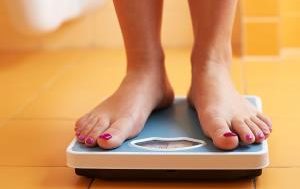While weight loss diets often get a bad wrap for being restrictive and generally fostering an unhealthy relationship with food, the reality is that there are a number of diets that have been developed by qualified professionals with a strong base of research to support their use.
The Volumetrics diet, the work of satiety expert Professor Barbara Rolls, is one such diet.
Voted as one of the top international diets for the past two years, the cult weight loss program is not a strict diet plan, rather a guide to healthy eating and weight control that specifically focuses on the energy density of the foods we eat.
READ MORE: The Sirtfood diet: The program behind Adele’s staggering weight loss
What is the Volumetrics diet?
It’s been shown that when we focus our diet on foods with a low energy density, we naturally eat fewer calories, are more satisfied and lose weight as a result. So if your ideal diet is all about eating more food, the Volumetrics diet could be for you.
A food’s energy density refers to how many calories or kilojoules are contained in a unit or volume of food.
Foods with a low energy density, including fruits, vegetables, soups and low-fat dairy, offer much bulk and water for relatively fewer calories per serve.
High energy density foods such as fried and fast food, processed snacks and carbohydrate based foods offer comparatively more calories for a similar volume of food.
Low energy dense foods are generally less processed foods that are packed with water and often fibre, which boosts the satiety value of these foods, so you feel full afterwards.

READ MORE: The Dubrow diet: The truth behind weight loss program invented by reality TV stars
How does the Volumetrics diet work?
The work of Professor Rolls has been shared in the scientific community for many years, with her work in the journal Appetite showing that adding a low-calorie soup to your meal helps to reduce overall calorie intake by as much as 100 calories per meal. This is one of key reasons a Volumetrics approach has been shown to support slow but sustainable weight loss over time — you basically end up eating less without feeling deprived.
When it comes to diets, many of us prefer them to be clear and structured but the goal of the Volumetrics diet is to keep the structure and rules to a minimum so followers develop an eating pattern that they can maintain in the long term.
READ MORE: Lose weight without trying using these supermarket shopping hacks
Rather than a set plan, foods are divided into categories based on their energy densities.
‘Category 1’ includes the foods with the lowest energy densities, including skim milk, non-starchy veggies and broth-style soup.
‘Category 2’ includes low density foods, including grains, fruits, starchy veggies, legumes and lean protein.
‘Category 3’ are the medium energy dense foods such as cheese, bread, fries and ice-cream.
‘Category 4’ is the most energy dense foods such as butter, chocolate, chips and processed snacks.
The program directs followers to base their diets around categories 1 and 2, keep an eye on portions in category 3 and keep category 4 to a minimum in the diet. Here, no foods are off limits, rather followers are encouraged to build a diet that is much richer in unprocessed, low-calorie foods and adds minimal volumes of high-calorie options on a daily basis.
A sample day using the Volumetrics diet
Breakfast
Oats with skim milk and berries
Snack
Cut up salad vegetables with skim milk coffee
Lunch
Large salad with salmon and quinoa
Afternoon Snack
Popcorn and berries
Dinner
Bowl of soup, ½ plate of salad or vegetables, grilled protein
Dessert
Low-fat yoghurt with passionfruit
Dietitian’s verdict
The standout feature of this approach from a nutritional perspective is that calories are kept low via the use of largely unprocessed foods, but these foods are all exceptionally filling. Dieters will be kept full and satisfied, making it a plan that’s easy to adhere to long term.
The only downside to this approach is that it does require a certain amount of food preparation to ensure the diet is based on low-calorie and unprocessed food options.
READ MORE: A nutritionist’s top healthy supermarket frozen foods
Meals and snacks we pick up outside of the home generally contain a lot more calories than foods we prepare fresh at home. For this reason a Volumetrics approach will work when you take control of the food prep and cooking.
If you’re not a massive fan of vegetables and soups, this one could prove a little tricky, as these foods play key roles in building the foundation to the Volumetrics approach. On the other hand, if you love your fresh foods, veggies and soup, adopting a Volumetrics approach will not only improve your nutritional intake overall, but you are likely to drop a few kilos (if you need and want to) as a result of this simple shift to including more low energy dense foods in your daily diet.
Author Susie Burrell is a leading Australian dietitian and nutritionist, founder of Shape Me, and prominent media spokesperson, with regular appearances in both print and television media commenting on all areas of diet, weight loss and nutrition.
11 processed foods that are actually good for you



